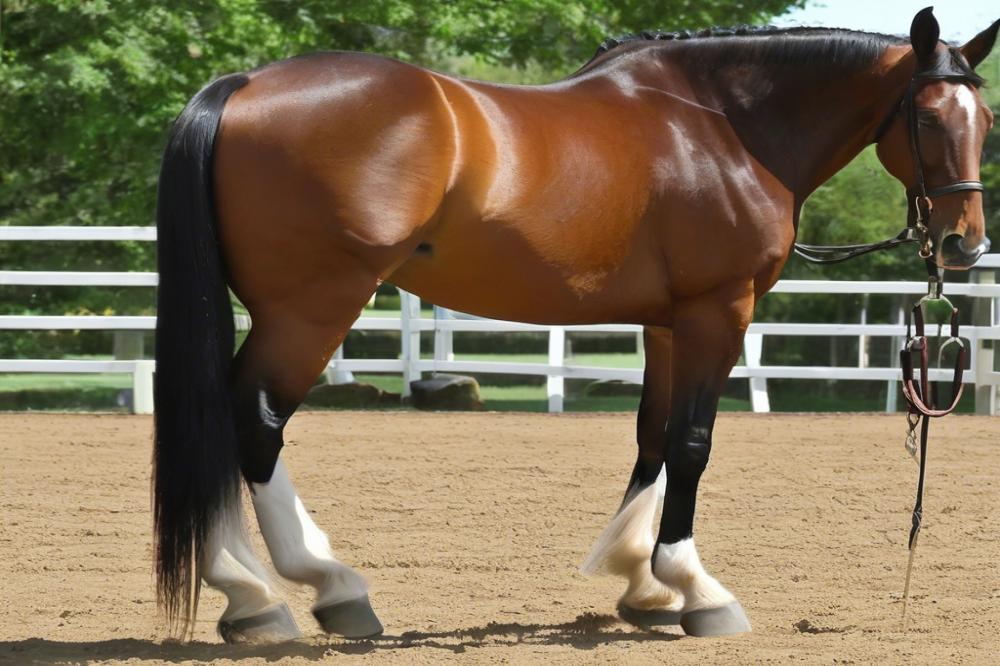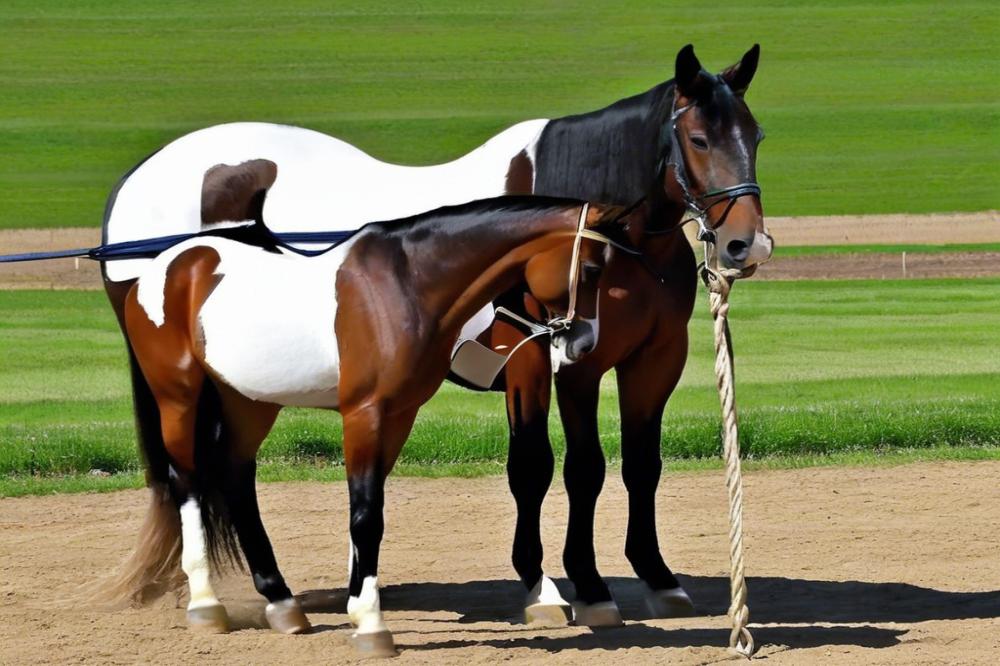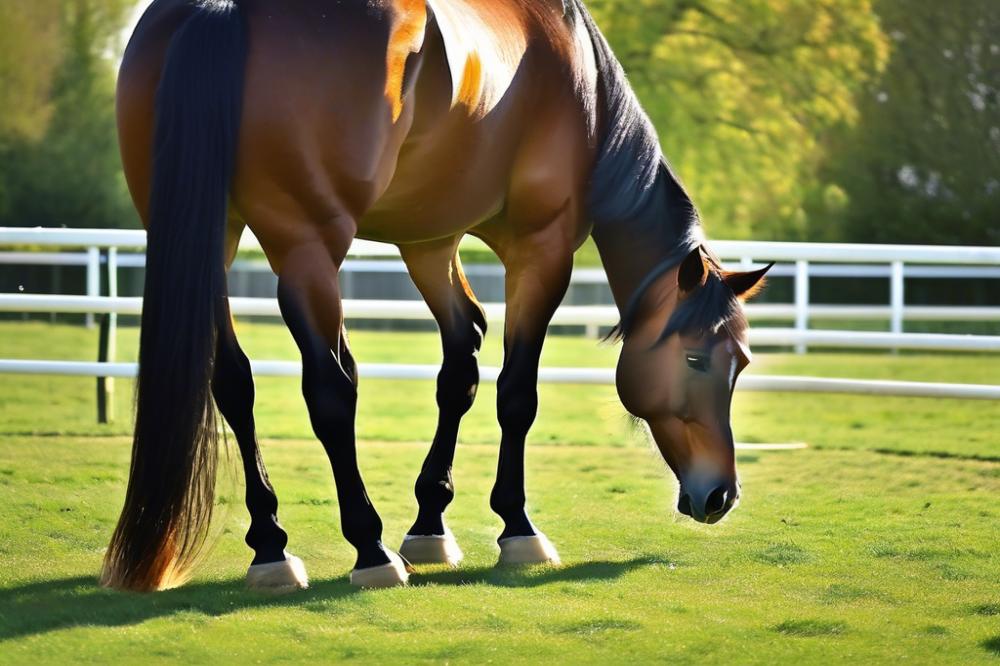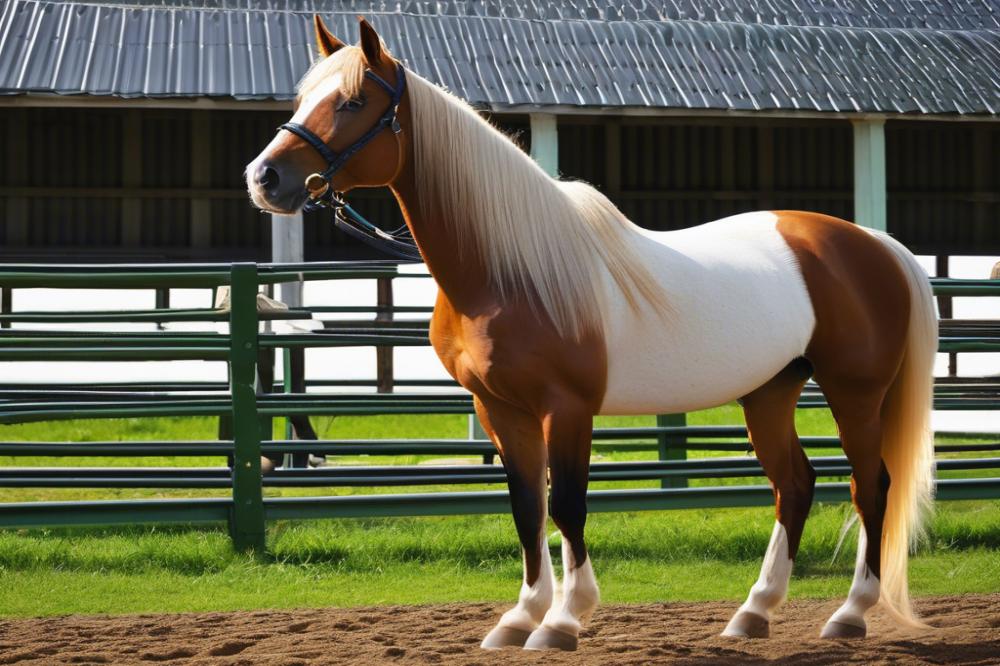Getting Started with Tying Your Horse
Teaching a horse to stand tied is not just a handy skill; it’s an essential part of horse training and care. Think of it like teaching a child how to wait patiently while you cook dinner. It builds trust and safety. When a horse learns to stand calmly tied, you’re opening up a world of possibilities for safer handling, more effective grooming, and less stress for everyone involved. After all, nobody wants a horse that drags them around like a kite caught in a gust of wind!
The benefits that come with proper horse tying are numerous. For starters, it allows you to safely groom your horse—think of all that messy mane and tail you want to comb through without having to chase your four-legged friend around the barn. Moreover, learning to stand tied helps with other training techniques. A horse that stands quietly while tied is typically more relaxed during situations that can be a bit overwhelming, such as vet visits or busy events like the camperdown races today.
Let’s also touch on safety, because, let’s face it, a well-tied horse is a safer horse! An unruly horse might not only endanger itself but also those around it. It’s comparable to driving a car: you wouldn’t want an unbuckled seatbelt during a bumpy ride. Learning the right way to tie up a horse ensures everyone remains safe and calm in the process.
As we delve into this topic, you’ll see that there are various methods and techniques to teach your horse to stand tied. Each horse is an individual with its own quirks—like that friend who always shows up late to the party! Some methods may work better for certain horses while others will need more time and patience. The key is to work at your horse’s pace and ensure you’re not introducing anything that could lead to fears, like using abusive horse bits or harsh equipment.
Don’t worry! With a little humor and a lot of patience, you and your horse can master this useful skill together. Preparing for this journey means understanding your horse’s behavior and responding to their needs. After all, even the most placid horses can feel anxious when faced with new experiences. So, let’s saddle up and get ready to learn more about how to teach your horse this vital skill!
Understanding the Horse’s Nature

Flight Response and Instinct
Horses are prey animals. Their instinct is to run at the first sign of danger. This flight response is deeply rooted in their behavior. Even in the calmest situations, the urge to flee can kick in. When teaching a horse to stand tied, remember that this instinct can cause anxiety. A sudden noise or movement can make them feel threatened. Understanding this is crucial for anyone serious about horse training.
The Importance of Trust and Patience
Building trust takes time. Rushing through training often backfires. Horses can sense your feelings. If you’re anxious, they’ll pick up on it. Stay calm and patient during each step of horse tying. Encourage your horse and celebrate small victories. The relationship you build is just as vital as the equestrian techniques you use. With trust, your horse will eventually feel secure in its environment.
Recognizing Body Language and Signs of Distress
Horses communicate primarily through body language. Ears pinned back can mean irritation or fear. A raised head or wide eyes suggest they are on high alert. Watch closely for subtle signs like a swishing tail or stomping hooves, which indicate discomfort. Recognizing these cues can help you adjust your approach. Pay attention to how your horse reacts to being tied. It allows you to respond appropriately, easing their tension. An attentive trainer can make all the difference in horse care, ensuring a smooth process for both parties.
Preparing for Training

First, let’s talk about the gear you need. Selecting the right equipment for this task can make a world of difference. A good halter is essential; it should fit snugly but not too tight. For the lead rope, make sure it’s sturdy yet light enough for comfort. You’ll also need a reliable tying post. This post should be strong and stationary, as a wobbly post can become a distraction and a safety hazard.
Now, think about the environment. Creating a safe space is key when you want to teach a horse to stand tied. Choose a location that is quiet and free from distractions. Horses can be easily spooked, so picking a calm area without sudden noises or movements helps them focus. Keep other animals away during training sessions. A barking dog or a running child might send them into a whirlwind!
Before diving into the main lesson, try some pre-training exercises. Groundwork and handling are important equestrian skills that set the stage for learning. Practice leading your horse around, getting it used to your presence and commands. You can even ask a friend to help. As you walk with the horse, show it that you’re a calm leader. This builds trust and confidence. When your horse is comfortable with you, it’s more likely to relax while tied.
Consider using treats as a motivator. Treats can work wonders in encouraging good behavior. Positive reinforcement helps to reinforce equestrian techniques and can ease any apprehension your horse might feel. Just be careful not to overdo it; moderation is key. A treat here and there makes the whole process much more enjoyable! Remember, patience and understanding go a long way in horse training. After all, a relaxed horse is a happy horse.
Step-by-Step Training Process

Introducing the Horse to the Tying Area
Finding the right spot to tie your horse is the first thing to consider. Choose a safe area free from distractions. Horses, being naturally curious, will appreciate a quiet location. This will help them relax as they get used to the new environment. Use a sturdy post or a tying ring that can handle some pulling. Lead your horse to this area calmly. Let them sniff around and explore. This initial introduction should feel like a pleasant outing rather than a chore.
Gradually Acclimating the Horse to Being Tied
Next comes the process of getting them used to standing tied. Start by loosely clipping a lead rope to the halter without tying it. Allow your horse to feel the pressure but not in a way that feels restrictive. Gradually, you can tie the rope for short periods. Keep these sessions brief—think of it like getting used to a new pair of shoes. You wouldn’t wear them all day from the get-go! After tying, you can give them a moment to simply enjoy the experience. Keep things light and relaxed.
Using Rewards and Positive Reinforcement
A little bit of encouragement goes a long way in horse training. Use treats or soothing words to reward the horse when they stand still. It’s like a high-five but much more appreciated by them. Positive reinforcement builds trust and a stronger bond with your horse. If they stand tied without fussing, make sure to praise them. This solidifies the lesson that staying tied can lead to good things, like treats and happy voices.
Handling Resistance and Promoting Relaxation
Sometimes horses may not take to this new skill right away. If your horse starts pulling or acting restless, don’t panic. Pulling back is a natural horse behavior. Instead, stay calm. Speak to your horse in a soothing tone. You might even gently rub their neck or chest. This can help them to feel more secure. If the resistance continues, return to the earlier steps. After all, patience is vital in horse care. The ultimate goal is to create a safe space where your horse feels secure while tied. Remember, every horse is unique, and what works for one may not work for another. Keep adapting your approach as needed.
Common Challenges and Solutions
Addressing Fear and Anxiety in Horses
Feeling anxious is something many horses experience. Imagine standing tied when all they want is to run away. It’s less about being stubborn and more about instinct. Begin by creating a calm environment. Soft voices and gentle hands can work wonders. Using treats can also ease the tension. Reward the horse for standing quietly. This builds trust. Over time, even the most timid horse can learn to relax while tied.
It’s crucial to recognize signs of fear. If the horse’s ears are pinned back or it’s dancing around, it’s feeling stressed. Take a step back. Sometimes, this might mean letting them move around freely before trying again. Gradually introduce them to the tying process. Short sessions of positive experiences can lead to lasting change. Patience is key in this journey.
Dealing with Pulling Back and Escaping
Pulling back can turn into a rodeo if not addressed properly. Horses often feel trapped when tied. This instinct leads them to panic and try to escape. Your first step should be to check the equipment. Ensure the halter is tight but comfortable. Loose gear can lead to slips and escapes.
If the horse starts pulling, avoid yanking on the lead rope. Instead, keep the line steady. A gentle pull forward can encourage the horse to move toward you. Consistent, calm behavior from you will help. By staying relaxed, the horse will feel more secure.
Consider using a breakaway halter. These can snap if the horse pulls back too hard. It’s like a safety net. The horse learns it can give in this situation, which can lower anxiety. Over time, they’ll begin to trust the tether instead of fearing it.
Strategies for Overcoming Specific Problem Behaviors
Different horses might show specific behaviors when learning horse tying. For example, some might stomp their feet or whinny loudly. Those behaviors aren’t just noise; they signal discomfort. Again, pay close attention to the horse’s body language. Recognizing these signs is part of building your equestrian skills.
Use distractions such as toys or a buddy horse nearby. This can take their mind off the tied situation. If they seem particularly nervous, introduce gentle exercises. Working on basic commands while tied can help. Repetition helps solidify what you are teaching.
Sometimes, training can feel like a game of cat-and-mouse. Don’t try to force compliance. Instead, celebrate small victories. A horse that stands for just a minute is a step forward. Before you know it, longer tied periods will become the norm. With patience, practice, and a sense of humor, both you and your horse can enjoy the tying process without all the drama.
Maintaining and Reinforcing Tied Standing
Establishing a routine is key in reinforcing the training of your horse. Horses thrive on consistency, much like kids with their favorite bedtime story. Morning and evening are great times to practice tied standing. Try to create a relaxed atmosphere, so your horse feels comfortable during each session.
Using commands consistently is important. Each call should mean something specific to your horse. Words like “stand” or “whoa” should be used every time you want your horse to stay in one spot. The goal is to have them connect the sound with the action. If you change the wording too much, it can confuse them, and we wouldn’t want a confused horse. In time, they’ll catch on and respond without hesitation.
A gradual increase of time spent tied is another crucial part of training. Start with just a few minutes and reward them for their patience. Imagine asking a child to sit still for hours; it’s not easy! As your horse settles in, slowly extend those minutes. Building tolerance takes time. If your horse starts to fidget, reduce the time and try again later.
Always check the equipment! Ensuring that there are no loose knots or broken ties is vital for safety. You wouldn’t want your horse to break free unexpectedly. Besides, it’s always a good idea to keep an eye on their behavior. If they begin to exhibit stress signs, such as pawing or tugging, it’s wise to step back. Monitor their reactions to remain in tune with their feelings.
Using distractions can also help during training. Bring a favorite toy or treat to capture their attention. It can make the experience more enjoyable for both of you. Remember, training should feel like a partnership. Working together strengthens your bond and boosts your equestrian skills.
Incorporating these methods creates a strong foundation for your horse. This will benefit both their behavior and your skills as a trainer. As your horse learns, you’ll also grow in your approach to horse care. Keep the lessons light and enjoyable, and you might just be surprised at how well your horse responds!
When to Seek Professional Help
Recognizing the limits of personal expertise in horse training is crucial. Each horse presents its own personality and quirks. While you may feel confident in your equestrian skills, every horse can behave differently. Some may take to training smoothly, while others can throw unexpected challenges your way. If you find yourself hitting a wall, it might be time to consider outside help.
It’s also important to understand when issues require a trainer. If your horse is consistently resistant to tying, it may not just be stubbornness. Fear or anxiety could be at play, and these emotions often need a skilled hand. A trainer trained in equestrian techniques can help decode your horse’s behavior. They could see things you might miss or know special methods that work wonders. There’s no shame in admitting that a fresh perspective can be valuable.
Seeking professional training intervention brings numerous benefits. An experienced trainer can offer targeted exercises tailored to your horse’s needs. They can teach you effective methods and solid strategies while building your confidence. Imagine learning new equestrian skills that make training more rewarding. Plus, having a trainer to guide you helps build trust with your horse. This bond is essential for successful horse tying practices. A team approach can create a more enjoyable experience for both horse and rider.
Putting It All Together
Teaching a horse to stand tied isn’t just a task on a trainer’s checklist; it’s a valuable skill that sets the tone for all future interactions. A calm, patient horse will make everything from grooming to loading into a trailer much easier. Imagine your horse, standing quietly by your side while you chat with a friend or adjust tack. It’s a scene that reflects the harmony between horse and rider. This bond enables pleasant experiences in various settings—whether you’re in the arena working on those English disciplines or just hanging out enjoying the splash of horse life color combos.
Patience truly is a virtue in horse training. Horses can be quirky creatures, full of surprises that would make a magician jealous. There may be moments where your horse seems less than enthusiastic about standing still. Remember, they don’t have our patience—or our understanding of why it’s essential! Engage your horse with kindness, and give them time to understand what you want. Celebrating small victories can go a long way in encouraging progress.
As you venture down this training path, consistency is your best friend. Like a steady drummer in a band, practicing the same routine builds comfort and trust. Regularly revisiting these lessons helps solidify your horse’s ability to stand tied. It’s a bit like baking; you can’t just toss ingredients together whenever you feel like it and expect a cake—it needs that consistent mixing and baking time!
Ultimately, training is a journey, not a race. As you work together, you’ll not only teach your horse life skills but also cultivate a strong, lasting bond that can weather any challenge. Just remember, every moment spent together is an opportunity to grow. Cherish the journey, and laugh off the bumps along the way. After all, who doesn’t love a good horse story? The connections made during these training sessions are what truly enrich the horse life experience. So saddle up, embrace the process, and enjoy each day with your four-legged companion!



